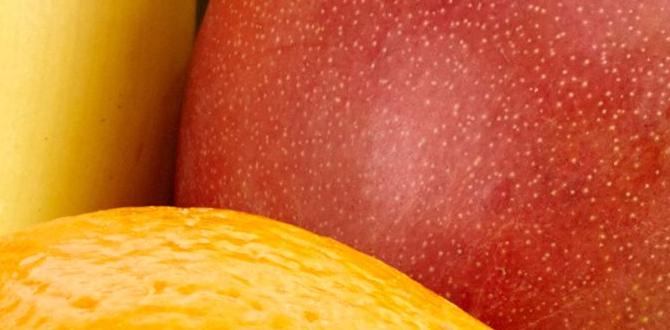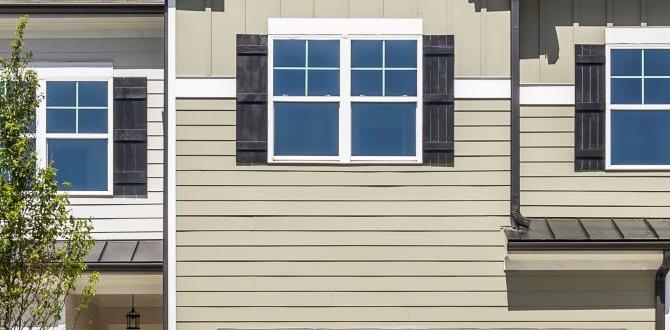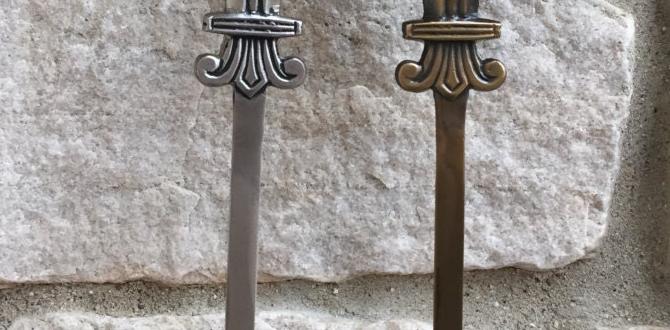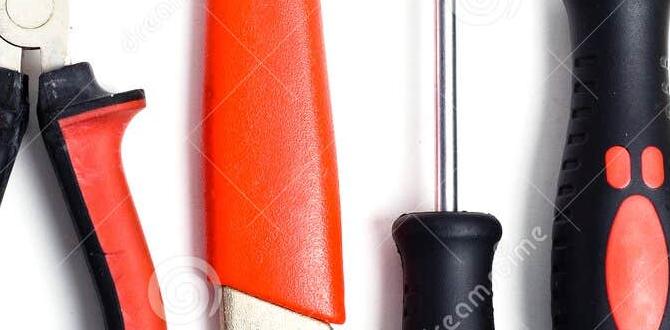Quick Summary
Choosing modern indoor pots for plants is essential for both plant health and home aesthetics. Look for pots with drainage, appropriate materials (terra cotta, ceramic, self-watering), and sizes that match your plant and space. Proper pot selection prevents root rot and elevates your indoor jungle.
Hello there, fellow plant lovers! Are you ready to transform your living space into a lush green sanctuary but feel a bit lost when it comes to picking the perfect pot for your leafy friends? It’s true, the world of indoor plant pots can seem overwhelmingly vast, with endless styles and materials. The wrong pot can lead to unhappy plants, and frankly, a less-than-stunning display. Don’t worry, though! I’m here to help you navigate this exciting journey with ease. We’ll explore the “essential genius” behind selecting modern indoor pots that will not only keep your plants thriving but also boost your home’s style. Get ready to discover how the right container can be a game-changer for your indoor garden!
Why Smart Pot Choices Matter for Your Plants
Picking the right pot is more than just about looks; it’s truly fundamental to your plant’s well-being. Think of a pot as your plant’s home. Just like we need a comfortable and healthy place to live, our plants need a pot that provides adequate space, air, and drainage. Without these basics, your plant can struggle. Overwatering is a super common issue, often exacerbated by pots that don’t allow water to escape, leading to root rot – the bane of many a plant parent’s existence!
But it doesn’t have to be so complicated. By understanding a few key principles and the genius behind modern pot designs, you can make confident choices that support vibrant growth. We’ll dive into the materials, features, and styles that make a real difference. So, let’s get started on making your plant-parenting journey a little easier and a lot more beautiful!
The “Essential Genius” of Modern Indoor Pots
What makes a pot “modern” and “genius” for your indoor plants? It’s a blend of smart design, functional materials, and sleek aesthetics that cater to both plant needs and contemporary living spaces. Modern indoor pots for plants often prioritize:
- Drainage: This is non-negotiable for most plants. Genius pots ensure excess water can escape to prevent soggy roots.
- Breathability: Some materials allow air to reach the roots, promoting healthy growth.
- Water Management: Innovative designs, like self-watering systems, help maintain consistent moisture levels.
- Style: Clean lines, minimalist designs, and on-trend colors and textures complement modern decor.
- Durability: Materials are often chosen for longevity and ease of care.
Let’s break down the key features and materials that contribute to this essential genius.
Understanding Drainage: The Unsung Hero
This is the single most important factor when selecting a pot. Drainage holes allow excess water to flow out of the pot. This prevents the soil from becoming waterlogged, which can lead to root rot. Root rot suffocates the roots, making them unable to absorb nutrients and water, and can eventually kill your plant. Even with a good watering routine, a pot without drainage is a recipe for disaster.
What to look for:
- One or more holes at the bottom: The more, the better, generally.
- A saucer or cachepot: If your pot doesn’t have drainage, you’ll need to use it as a cachepot, meaning you’ll place a smaller, plain plastic pot with drainage inside it. This allows you to water the plant normally and then empty any excess water from the inner pot or saucer.
For a deeper dive into why proper drainage is so critical, check out these insights from the University of Illinois Extension on proper potting techniques. They emphasize the importance of good aeration and drainage.
Material Matters: The Foundation of Your Pot
The material of your pot plays a significant role in how it retains moisture, how breathable it is, and how it looks. Modern indoor pots are available in a variety of materials, each with its pros and cons.
Terra Cotta (Terracotta) Pots
These classic, unglazed clay pots are a favorite for many reasons. They are porous, meaning they allow air and moisture to pass through the walls. This helps the soil dry out more evenly and quickly, which is great for plants that prefer drier conditions, like succulents and cacti.
Pros:
- Excellent aeration and drainage.
- Naturally regulates soil temperature.
- Affordable and widely available.
- Develops a beautiful patina over time.
Cons:
- Can dry out very quickly, requiring more frequent watering.
- Heavy and can break if dropped.
- Can develop mineral deposits or “sweat” on the outside.
Ceramic Pots
Ceramic pots are typically glazed on the inside and outside, although some are matte or unglazed. The glaze creates a non-porous surface, meaning they retain moisture much longer than terra cotta. This can be beneficial for plants that like consistently moist soil but can be a risk for over-waterers.
Pros:
- Aesthetically pleasing with a wide range of colors, finishes, and designs.
- Durable and less prone to breakage than terra cotta.
- Excellent for retaining moisture.
Cons:
- Lack of breathability can lead to overwatering issues if not managed carefully.
- Often heavier than plastic or terra cotta.
- Can be more expensive.
- Crucial: Ensure ceramic pots have drainage holes, as many decorative ones do not.
Plastic Pots
Lightweight, inexpensive, and durable, plastic pots are a practical choice. They don’t breathe like porous materials, so the soil stays moist longer. They are excellent for starting seeds or for plants that prefer consistently damp soil.
Pros:
- Very lightweight and easy to handle.
- Inexpensive and durable.
- Retains moisture well, reducing watering frequency.
- Come in many colors and styles.
Cons:
- Less breathable, increasing the risk of root rot if overwatered.
- Can degrade over time with prolonged sun exposure (less of an issue for indoor use).
- Some find them less aesthetically appealing than ceramic or terra cotta.
Concrete and Cement Pots
These offer a very modern, industrial, or minimalist look. They are typically heavy and durable. Like terra cotta, concrete can have some porosity, allowing for a bit of breathability, but they generally retain more moisture than terra cotta.
Pros:
- Extremely durable and long-lasting.
- Unique, modern aesthetic.
- Heavyweight, which is great for supporting larger plants and preventing tipping.
Cons:
- Very heavy, making them difficult to move.
- Can be prone to cracking in extreme temperature changes (less of an issue indoors).
- Often more expensive.
- Ensure they have drainage holes.
Metal Pots
Galvanized steel or powder-coated metal pots can add a sleek, contemporary touch. They are durable but can get quite hot in direct sunlight, which can stress plant roots. They also don’t breathe and can rust if water sits on them for too long, though high-quality coatings help prevent this.
Pros:
- Modern and stylish look.
- Durable.
- Waterproof (if not perforated).
Cons:
- Can overheat plant roots in direct sun.
- No breathability, increasing root rot risk.
- Can rust over time.
- Essential: Always check for drainage holes!
Self-Watering Pots (Reservoir Pots)
These are the epitome of genius for busy plant parents or those who struggle with watering consistency. Self-watering pots have a built-in reservoir at the bottom that holds water. A wicking system (often a fabric wick, a porous ceramic piece, or a porous soil column) draws water up into the soil as it dries, providing a consistent level of moisture. Many modern designs feature clean lines and muted colors.
Pros:
- Significantly reduces watering frequency.
- Provides consistent moisture, preventing both over- and under-watering.
- Ideal for vacations or forgetful waterers.
- Often made from durable plastics or attractive ceramic/resin materials.
Cons:
- Can be more expensive upfront.
- Some plants may not thrive with constant moisture (e.g., succulents, cacti), though many can be managed if allowed to dry between refills.
- It’s important to occasionally flush the soil to prevent salt buildup.
The Royal Horticultural Society (RHS) offers great advice on potting and repotting, which touches upon the importance of choosing the right container for your plant’s needs.
Size Matters: Finding the Perfect Fit<
Choosing the right size pot is crucial for healthy plant growth. A pot that is too big can hold too much moisture, leading to root rot. A pot that is too small can stunt growth and cause the plant to dry out too quickly.
General Guidelines:
- For repotting: Generally, move up only one pot size (about 1-2 inches larger in diameter) when your plant is root-bound.
- When buying a new plant: If the plant is healthy and well-rooted, consider if it will outgrow its current pot quickly. If it’s very root-bound, repotting into a slightly larger pot is a good idea.
- Consider plant type: Some plants, like ferns, appreciate room to grow, while others, like ZZ plants, prefer to be a bit snug.
If you’re unsure about when to repot, look for signs like roots growing out of the drainage holes, water running straight through the pot, or reduced growth. This is detailed in many horticultural guides. For instance, the Gardening Know How website provides excellent indicators for when a plant needs a new home.
Aesthetic Genius: Modern Styles
Beyond function, modern indoor pots are celebrated for their design. “Modern” in this context often means:
- Minimalist: Clean lines, simple shapes (cylinders, cubes, simple bowls).
- Geometric: Interesting angles and forms that make a subtle statement.
- Neutral Colors: Whites, grays, blacks, beige, and muted earth tones are common, allowing the plant to be the star.
- Textured Finishes: Matte, ribbed, or subtly patterned surfaces.
- Hanging Pots: Modern macrame or sleek ceramic hanging planters add vertical interest.
- Planter Stands: Pots that elevate plants off the floor or surfaces with minimalist stands.
These styles integrate seamlessly into contemporary decor, from Scandinavian to mid-century modern and beyond.
Decoding Modern Indoor Pots: A Quick Reference Guide
To help you make quick decisions, here’s a table summarizing the key features of different pot types:
| Pot Type | Material | Drainage | Breathability | Moisture Retention | Aesthetic | Best For | Considerations |
|---|---|---|---|---|---|---|---|
| Classic Terra Cotta | Unglazed Clay | Excellent | High | Low | Earthy, Rustic | Succulents, Cacti, Herbs, Plants that like drying out | Needs frequent watering; can dry out fast. |
| Glazed Ceramic | Ceramic (Glazed) | Varies (Check!) | Low | High | Decorative, Versatile | Plants that prefer consistently moist soil (Ferns, Calatheas), or use as cachepot with inner pot | Ensure drainage; can be heavy; overwatering risk. |
| Plastic | Plastic | Usually Yes | Very Low | Moderate to High | Basic, Color Options | Seedlings, Plants that like moist soil, Budget-conscious growers | Less aesthetically refined; overwatering risk. |
| Concrete/Cement | Concrete/Cement | Usually Yes | Moderate | Moderate | Industrial, Modern, Minimalist | Larger plants, Architectural plants, Outdoor-indoor transition | Very heavy; can be cold; check for sealing for moisture control. |
| Self-Watering | Plastic, Ceramic, Resin | Built-in Reservoir | Low (via wick system) | Controlled | Modern, Functional | Busy individuals, Travelers, Plants needing consistent moisture | Higher upfront cost; can lead to salt buildup; not ideal for all plants. |
| Metal | Galvanized Steel, Coated Metal | Check! | Very Low | Moderate to High | Sleek, Modern, Industrial | Decorative foliage plants; use with caution in direct light | Can overheat roots; rusting risk; check for drainage. |
Step-by-Step: Choosing Your Modern Pot
Ready to put your knowledge into action? Here’s a simple, step-by-step guide to picking the perfect modern indoor pot for your plant:
- Assess Your Plant’s Needs:
- Does it like to dry out between waterings (succulents, cacti, snake plants)? Go for porous materials like terra cotta or unglazed ceramic.
- Does it prefer consistently moist soil (ferns, calatheas)? Opt for less porous materials like glazed ceramic, plastic, or self-watering pots.
- How large is the plant, and how much will it grow? Choose a size that allows for a little growth but isn’t excessively large.
- Check for Drainage Holes: This is paramount. If the pot doesn’t have holes, can you drill them (carefully!) or will you use it as a cachepot (see below)? If it’s a decorative pot without holes, it’s best reserved to hold a nursery pot with drainage.
- Consider the Material: Think about your watering habits and the environment. If you tend to overwater, a more porous pot might be risky unless you’re very vigilant. If you travel often, self-watering is genius.
- Select the Style: Browse modern designs that complement your home decor. Look for clean lines, interesting textures, and colors that enhance your space.
- Size It Right: Ensure the pot is about 1-2 inches larger in diameter than the plant’s current root ball. If you’re potting a very young plant, a slightly larger pot can accommodate growth.
- Factor in Weight and Placement: Will the pot need to be moved often? Heavy ceramic or concrete pots are best placed where they will stay long-term or on stands that are easy to maneuver.
- The Cachepot Strategy: If you fall in love with a stunning pot that lacks drainage holes, simply use it as a cachepot. Keep your plant in its original plastic nursery pot (with drainage holes!) and place that inside the decorative cachepot. Remove the inner pot when watering to drain excess water, or carefully empty the cachepot after watering. This allows you to have the best of both worlds: stunning aesthetics and healthy plants.
DIY Genius: Upcycling and Customizing Pots
For the eco-conscious among us, there’s genius in giving old items new life! Many everyday objects can be transformed into fantastic modern planters, often with a bit of paint or creativity.
- Tin Cans: Cleaned, painted in matte black





